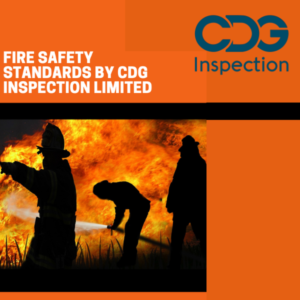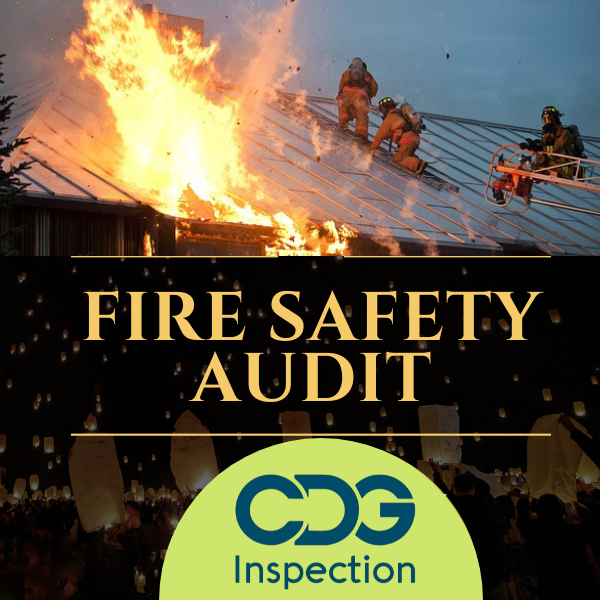Fire safety is a critical aspect of building management and public safety. Compliance with fire safety regulations is a legal requirement, but a true commitment to protecting lives and property goes beyond mere compliance. That’s where fire safety audits come into play. By conducting thorough and regular audits, organizations can elevate their fire safety standards, ensuring a safer environment for everyone. In this blog post, we will explore the significance of fire safety audits and how they can go beyond compliance to enhance overall fire safety measures.

Understanding Fire Safety Audits:
Fire safety audits involve a comprehensive examination of a building’s fire prevention and protection systems, procedures, and policies. These audits are typically conducted by qualified professionals or external fire safety experts who possess the necessary knowledge and expertise. The goal is to assess the existing fire safety measures, identify potential risks, and recommend improvements.
Benefits of Fire Safety Audits:
2.1. Identifying Vulnerabilities: Fire safety audits help pinpoint vulnerabilities in a building’s fire prevention and protection systems. By assessing factors such as emergency exits, fire alarms, sprinkler systems, and evacuation plans, audits can uncover weaknesses that may have gone unnoticed. This knowledge allows organizations to address these vulnerabilities proactively, reducing the risk of fire incidents.
2.2. Compliance Enhancement: While compliance with fire safety regulations is essential, audits can take it a step further by ensuring that all fire safety measures are up to code. Auditors can provide guidance on local, regional, and national regulations, ensuring that organizations are fully compliant with the latest standards. By surpassing the minimum requirements, businesses demonstrate a commitment to going above and beyond for fire safety.
2.3. Risk Mitigation: Fire safety audits help organizations mitigate potential risks. Auditors can analyze factors such as fire hazard identification, storage of flammable materials, electrical system safety, and emergency response protocols. By identifying and addressing potential risks, audits minimize the likelihood of fire incidents and subsequent damage.
2.4. Enhanced Emergency Preparedness: Fire safety audits contribute to the development of robust emergency response plans. Auditors can evaluate evacuation procedures, communication systems, staff training, and the availability of firefighting equipment. With their recommendations, organizations can enhance emergency preparedness, ensuring a swift and organized response in case of a fire emergency.
Beyond Compliance: Elevating Fire Safety Standards:
3.1. Proactive Approach: Fire safety audits go beyond compliance by fostering a proactive approach to fire prevention. Instead of waiting for incidents to occur, audits encourage organizations to identify and rectify potential fire hazards before they become emergencies. This proactive mindset helps in creating a safer environment for occupants and minimizes property damage.
3.2. Continuous Improvement: Fire safety audits provide an opportunity for continuous improvement. Organizations can use the findings and recommendations from audits to enhance their fire safety measures continually. Regularly conducting audits and implementing improvements can ensure that fire safety standards are consistently elevated, creating a culture of ongoing vigilance.
3.3. Staff Awareness and Training: Fire safety audits can also highlight the importance of staff awareness and training. Auditors may evaluate the effectiveness of fire safety training programs and recommend improvements. By investing in regular training and awareness campaigns, organizations can empower their employees to respond effectively to fire emergencies, further enhancing overall fire safety.
Conclusion:
Fire safety audits are more than just a box-ticking exercise. They provide organizations with a comprehensive assessment of their fire safety measures, helping to identify vulnerabilities, improve compliance, mitigate risks, and enhance emergency preparedness. By adopting a proactive approach and committing to continuous improvement, organizations can elevate their fire safety standards beyond compliance, ensuring the safety and well-being of everyone in the building. Remember, fire safety is everyone’s responsibility, and fire safety audits are a powerful tool in achieving a safer future.

